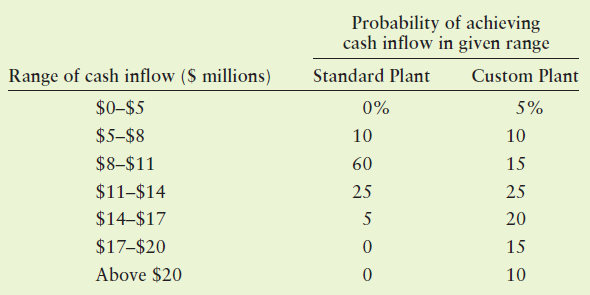Boardman Gasses and Chemicals is a supplier of highly purified gases to semiconductor manufacturers. A large chip
Question:
Boardman Gasses and Chemicals is a supplier of highly purified gases to semiconductor manufacturers. A large chip producer has asked Boardman to build a new gas production facility close to an existing semiconductor plant. Once the new gas plant is in place, Boardman will be the exclusive supplier for that semiconductor fabrication plant for the subsequent 10 years. Boardman is considering one of two plant designs. The first is for Boardman’s “standard” plant, which will cost $38.5 million to build. The second is for a “custom” plant, which will cost $53.5 million to build. The custom plant will allow Boardman to produce the highly specialized gases required for an emerging semiconductor manufacturing process. Boardman estimates that its client will order $12.5 million of product per year if the standard plant is constructed, but if the custom design is put in place, Boardman expects to sell $17.5 million worth of product annually to its client. Boardman has enough money to build either type of plant, and, in the absence of risk differences, accepts the project with the highest NPV. The cost of capital is 16.9%.
a. Find the NPV for each project. Are the projects acceptable?
b. Find the breakeven cash inflow for each project.
c. The firm has estimated the probabilities of achieving various ranges of cash inflows for the two projects as shown in the following table. What is the probability that each project will achieve at least the breakeven cash inflow found in part b?

d. Which project is more risky? Which project has the potentially higher NPV? Discuss the risk–return tradeoffs of the two projects.
e. If the firm wished to minimize losses (i.e., NPV < $0), which project would you recommend? Which would you recommend if the goal were to achieve a higher NPV?
Cost of capital refers to the opportunity cost of making a specific investment . Cost of capital (COC) is the rate of return that a firm must earn on its project investments to maintain its market value and attract funds. COC is the required rate of...
Step by Step Answer:

Principles of Managerial Finance
ISBN: 978-0134476315
15th edition
Authors: Chad J. Zutter, Scott B. Smart





